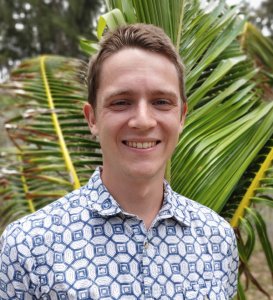When the Unmentionable becomes Unavoidable
by Joachim Schneider
A cesspool is nothing more than a hole in the ground that receives wastewater from all parts of the household. In the case of many cesspools, this wastewater leaches into the surrounding groundwater and surface water, causing environmental and public health hazards. There are approximately 88,000 cesspools in Hawaiʻi, spread across all islands regardless of geography and socio-economic circumstances of the homeowners. This generates 53 million gallons of sewage entering the coastal environment every day!
 The reason more people are talking about cesspools now is that Hawaiʻi passed three legislative acts (120, 125, and 132) within the last five years. Among other mandates, this legislation bans the construction of new cesspools and requires all existing cesspools to be converted to approved systems by 2050. Organizations like the environmental nonprofit WAI: Wastewater Alternatives & Innovations played a major role in advocating for these policy changes.
The reason more people are talking about cesspools now is that Hawaiʻi passed three legislative acts (120, 125, and 132) within the last five years. Among other mandates, this legislation bans the construction of new cesspools and requires all existing cesspools to be converted to approved systems by 2050. Organizations like the environmental nonprofit WAI: Wastewater Alternatives & Innovations played a major role in advocating for these policy changes.
I was introduced to WAI and their tireless efforts while working for a local wastewater engineering company. After earning a master’s degree in civil engineering in 2019 from the University of Hawaiʻi at Mānoa, I was selected as the 2020 Hawaiʻi Sea Grant E. Gordon Grau Fellow. With a deep interest in coastal and marine resources, and a recognition of the herculean task of reducing wastewater discharge from cesspools, I am excited to be spending most of my fellowship working for WAI and helping in their projects to improve the wastewater situation in Hawaiʻi.

One fundamental challenge in applying these new legislative rules is educating the public about a topic many don’t even think about. A homeowner who does not know that they have a cesspool or what hazards it poses to them and their environment is not likely to take any action. That is why WAI works to educate the community through online resources and outreach events such as town halls.
Another important challenge is that there is no one-size-fits-all solution for cesspool conversions. Depending on site conditions and budget considerations, each site and surrounding property needs to be matched with the appropriate technology to ensure efficient and effective treatment and disposal. Examples of innovative, nature-based systems that WAI is helping to spread throughout Hawaiʻi are biofilters and constructed wetlands. These systems are able to produce high-quality effluent using the same bacteria we all have in our gut and require very little maintenance.

It is understandable that homeowners want to see an innovative system in action before installing one in their own backyard, so WAI puts an emphasis on publicly accessible pilot systems. A great example of this is the Cinderella incineration toilet which can be visited at the Hawaiʻi Institute of Marine Biology on Moku o Loʻe or at Kuilima Farms on Oahu’s North Shore. The Cinderella toilet removes water from the equation entirely, incinerating solid and liquid waste immediately after use by means of propane or electricity and producing pathogen- and odor-free ash. The ash bowl fills up approximately once per week assuming average use, and can be emptied into the household trash bin.
Perhaps the hardest challenge in selling the idea of cesspool conversions is that they can be a significant financial burden, especially for folks on a fixed income. Connecting to the sewer system, if available, or upgrading to an on-site treatment and disposal system often costs upwards of $20,000. To address this sticky issue, WAI provides homeowners with information about financial resources that can help overcome this burden, such as loans, grants, subsidies, or rebates.
Converting all 88,000 cesspools in Hawaiʻi by 2050 will not be easy, but I am grateful that WAI has taken up this task, and I really enjoy working there and being a Sea Grant fellow.
Please visit www.waicleanwater.org for more information on all of the topics mentioned here. And watch these Voice of the Sea episodes highlighting this issue: Cesspool Issues Rising and Cesspool Solutions
About the author:
 Joachim Schneider is the 2020 E. Gordon Grau Coastal and Marine Resource Management Fellow, who has been hosted at Wastewater Alternatives & Innovations. He enjoys Hawaiian water sports like surfing, swimming, and snorkeling, so has an additional interest in keeping coastal waters clean and sparkling for his–and everyone’s–enjoyment!
Joachim Schneider is the 2020 E. Gordon Grau Coastal and Marine Resource Management Fellow, who has been hosted at Wastewater Alternatives & Innovations. He enjoys Hawaiian water sports like surfing, swimming, and snorkeling, so has an additional interest in keeping coastal waters clean and sparkling for his–and everyone’s–enjoyment!

